I haven't provided detailed commentary on the US labour market for a while now. To…
Australia labour market – getting worse as unemployment and underemployment rise
The Australian Bureau of Statistics released of its latest data today (February 20, 2020) – Labour Force, Australia, January 2020 – which continues to show that the Australian economy is in a weak state with a fairly moderate labour market performance being recorded for the start of 2020. The culprit – the Australian government – which is starving spending by its obsessive pursuit of a fiscal surplus. Employment growth was weak – 0.1 per cent and failed to keep pace with the underlying population growth. As a result, unemployment rose by 31 thousand persons and the unemployment rate rose by 0.2 points. Hours worked fell by 0.45 per cent. The only bright spot was the rise in full-time employment. The really worrying sign was the rise in underemployment – sharply up by 0.3 points to 8.6 per cent. The total labour underutilisation rate (unemployment plus underemployment) rose sharply to 13.9 per cent (up 0.5 points). There were a total of 1,905.2 thousand workers either unemployed or underemployed. This is a deplorable result. My overall assessment is that the Australian labour market remains a considerable distance from full employment and that that distance is increasing. This persistence in labour wastage indicates that the policy settings are too tight (biased to austerity) and deliberately reducing growth and income generation. There is clear room for some serious fiscal policy expansion at present. The Federal government is willfully undermining our economy with its irresponsible policy position.
The summary ABS Labour Force (seasonally adjusted) estimates for January 2020 are:
- Employment increased by 13,500 (0.1 per cent) – Full-time employment increased by 46,200 and part-time employment decreased by 32,700.
- Unemployment increased by 31,000 to 725,900 persons.
- The official unemployment rate increased by 0.2 points to 5.3 per cent.
- The participation rate increased by 0.1 points to 66.1 per cent.
- Aggregate monthly hours worked decreased by 8.1 million hours (0.45 per cent).
- Underemployment rose sharply by 45.2 and the rate rose by 0.3 points to 8.6 per cent (1,179.2 thousand). The total labour underutilisation rate (unemployment plus underemployment) rose sharply to 13.9 per cent (up 0.5 points). There were a total of 1,905.2 thousand workers either unemployed or underemployed.
Employment – modest rise in January 2020
Employment increased by 13,500 (0.1 per cent). This is a very por result.
Full-time employment increased by 46,200 and part-time employment decreased by 32,700.
So the only bright sign was the full-time employment growth.
The following graph shows the month by month growth in full-time (blue columns), part-time (grey columns) and total employment (green line) for the 24 months to January 2020 using seasonally adjusted data.
The zig-zag pattern where employment growth has regularly been around zero remains evident.
The following table provides an accounting summary of the labour market performance over the last six months.
As the monthly data is highly variable, this Table provides a longer view which allows for a better assessment of the trends.
Assessment:
1. Total employment has lagged behind the underlying population growth.
2. As a consequence unemployment has risen 11.9 thousand.
3. A significant proportion (55.4 per cent) of the net employment change has been part-time, which raises questions about the quality and security of the work being generated.
Given the variation in the labour force estimates, it is sometimes useful to examine the Employment-to-Population ratio (%) because the underlying population estimates (denominator) are less cyclical and subject to variation than the labour force estimates. This is an alternative measure of the robustness of activity to the unemployment rate, which is sensitive to those labour force swings.
The following graph shows the Employment-to-Population ratio, since February 2008 (the low-point unemployment rate of the last cycle).
It dived with the onset of the GFC, recovered under the boost provided by the fiscal stimulus packages but then went backwards again as the Federal government imposed fiscal austerity in a hare-brained attempt at achieving a fiscal surplus in 2012.
The ratio was constant in January 2020 at 62.6 per cent and remains below pre-GFC peak in April 2008 of 62.9 per cent.
To put the current monthly performance into perspective, the following graph shows the average monthly employment change for the calendar years from 1980 to 2020 (to date).
It is clear that after some lean years, 2017 was a much stronger year if total employment is the indicator.
It is also clear that the labour market weakened considerably over 2018 and that situation worsened in 2019.
2020 has not started well.
The following graph shows the average monthly changes in Full-time and Part-time employment (lower panel) in thousands since 1980.
The interesting result is that during recessions or slow-downs, it is full-time employment that takes the bulk of the adjustment. Even when full-time employment growth is negative, part-time employment usually continues to grow.
Remember: the average for 2020 is on one-month only (explaining the dive in part-time employment)
Teenage labour market deteriorates in January 2020
Total teenage net employment fell by 15.5 thousand in January 2020 with full-time teenage employment down 7.1 thousandth dn part-time employment down by 8.5 thousand.
The teenage unemployment rate rose by 1.1 points to 18.4 per cent as a result of the contraction in employment.
The following Table shows the distribution of net employment creation in the last month and the last 12 months by full-time/part-time status and age/gender category (15-19 year olds and the rest)
Over the last 12 months, teenagers have lost ground, while the rest of the labour force gained 251.5 (net) jobs. The overall shift in employment is fairly weak.
In terms of the current cycle, which began after the last low-point unemployment rate month (February 2008), the following results are relevant:
1. Since February 2008, there have been 2,347.9 thousand (net) jobs added to the Australian economy but teenagers have lost 83.7 thousand over the same period.
2. Since February 2008, teenagers have lost 120 thousand full-time jobs (net).
3. Even in the traditionally, concentrated teenage segment – part-time employment, teenagers have gained only 36.3 thousand jobs (net) even though 1,106.8 thousand part-time jobs have been added overall.
To put the teenage employment situation in a scale context (relative to their size in the population) the following graph shows the Employment-Population ratios for males, females and total 15-19 year olds since February 2008.
You can interpret this graph as depicting the loss of employment relative to the underlying population of each cohort. We would expect (at least) that this ratio should be constant if not rising somewhat (depending on school participation rates).
The absolute loss of jobs reported above has impacted more on males than females.
The male ratio has fallen by 12.2 percentage points since February 2008, the female ratio has fallen by 3.5 percentage points and the overall teenage employment-population ratio has fallen by 8.0 percentage points.
The other statistic relating to the teenage labour market that is worth highlighting is the decline in the participation rate since the beginning of 2008 when it peaked in February at 61.4 per cent.
In January 2020, the participation rate was just 54.2 per cent. This is a very unreliable statistic overall – it fluctuates widely on a monthly basis.
However, the difference between the 2008 level, amounts to an additional 99 thousand teenagers who have dropped out of the labour force as a result of the weak conditions since the crisis.
If we added them back into the labour force the teenage unemployment rate would be 27.2 per cent rather than the official estimate for January 2020 of 18.4 per cent.
Some may have decided to return to full-time education and abandoned their plans to work. But the data suggests the official unemployment rate is significantly understating the actual situation that teenagers face in the Australian labour market.
Overall, the performance of the teenage labour market leaves a lot to be desired. The decline in full-time employment for teenagers was particularly worrying.
This situation doesn’t rate much priority in the policy debate, which is surprising given that this is our future workforce in an ageing population. Future productivity growth will determine whether the ageing population enjoys a higher standard of living than now or goes backwards.
I continue to recommend that the Australian government immediately announce a major public sector job creation program aimed at employing all the unemployed 15-19 year olds, who are not in full-time education or a credible apprenticeship program.
Unemployment increased by 31,000 to 725,900 persons
The official unemployment rate increased by 0.2 points to 5.3 per cent.
The policy settings are such (austerity bias) that unemployment is now stuck at elevated levels with an upward bias. The latest fiscal statement assumes this will be the case for several more years.
It is well above the level that would be associated with any inflationary impulses being sourced from the labour market
The Government is thus deliberately holding unemployment at a level that will restrict wages growth and increase family hardship.
The following graph shows the national unemployment rate from January 1980 to January 2020. The longer time-series helps frame some perspective to what is happening at present.
Assessment:
1. It is still 0.4 points above the level it fell to as a result of the fiscal stimulus (which was withdrawn too early) and 1.3 point above the level reached before the GFC began.
2. There is clearly still considerable slack in the labour market that could be absorbed with fiscal stimulus.
3. Its persistently elevated level is directly related to the fiscal austerity that the Federal government has in place.
Broad labour underutilisation rises sharply – up 0.5 points to 13.9 per cent
The results for January 2020 are (seasonally adjusted):
1. Underemployment rose sharply by 45.2 and the rate rose by 0.3 points to 8.6 per cent (1,179.2 thousand).
2. The total labour underutilisation rate (unemployment plus underemployment) rose sharply to 13.9 per cent (up 0.5 points).
3. There were a total of 1,905.2 thousand workers either unemployed or underemployed.
The following graph plots the seasonally-adjusted underemployment rate in Australia from January 1980 to the January 2020 (blue line) and the broad underutilisation rate over the same period (green line).
The difference between the two lines is the unemployment rate.
The three cyclical peaks correspond to the 1982, 1991 recessions and the more recent downturn.
The other difference between now and the two earlier cycles is that the recovery triggered by the fiscal stimulus in 2008-09 did not persist and as soon as the ‘fiscal surplus’ fetish kicked in in 2012, things went backwards very quickly.
The two earlier peaks were sharp but steadily declined. The last peak fell away on the back of the stimulus but turned again when the stimulus was withdrawn.
If hidden unemployment (given the depressed participation rate) is added to the broad ABS figure the best-case (conservative) scenario would see a underutilisation rate well above 15 per cent at present. Please read my blog post – Australian labour underutilisation rate is at least 13.4 per cent – for more discussion on this point.
Hours worked decreased by 8.1 million hours (0.45 per cent) in January 2020
This reversed the seasonal surge associated with the December season, restoring the longer-term weakness.
The following graph shows the monthly growth (in per cent) over the last 24 months.
The dark linear line is a simple regression trend of the monthly change – which depicts a slightly decreasing trend.
Conclusion
My standard monthly warning: we always have to be careful interpreting month to month movements given the way the Labour Force Survey is constructed and implemented.
The January data reveals that the Australian economy is in a weak state with a fairly moderate labour market performance being recorded.
Employment growth was weak – 0.1 per cent and failed to keep pace with the underlying population growth.
As a result, unemployment rose by 31 thousand persons and the unemployment rate rose by 0.2 points.
Hours worked fell by 0.45 per cent.
The only bright spot was the rise in full-time employment.
The really worrying sign was the rise in underemployment – sharply up by 0.3 points to 8.6 per cent. The total labour underutilisation rate (unemployment plus underemployment) rose sharply to 13.9 per cent (up 0.5 points).
There were a total of 1,905.2 thousand workers either unemployed or underemployed.
This is a deplorable result.
My overall assessment is:
1. The current situation can best be characterised as being in a weak and deteriorating state.
2. The Australian labour market remains a considerable distance from full employment and that that distance is increasing.
3. This persistence in labour wastage indicates that the policy settings are to tight (biased to austerity) and deliberately reducing growth and income generation.
4. There is clear room for some serious fiscal policy expansion at present.
That is enough for today!
(c) Copyright 2020 William Mitchell. All Rights Reserved.

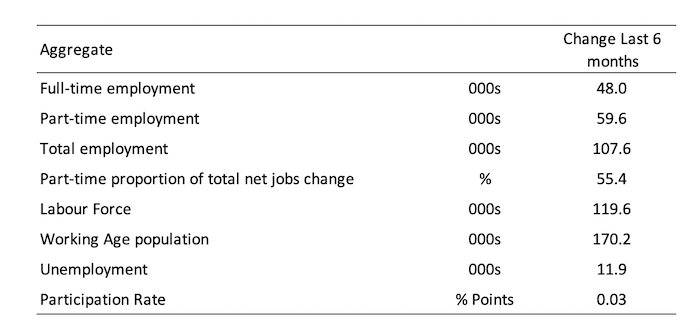
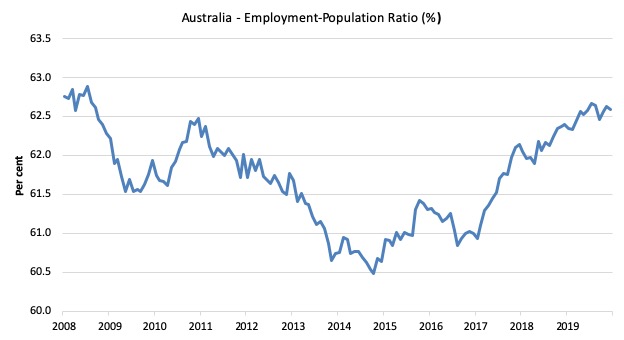
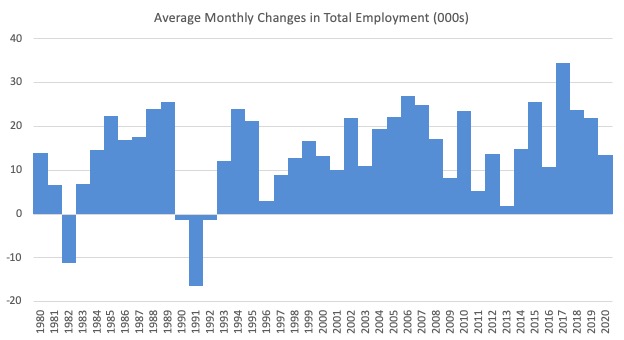
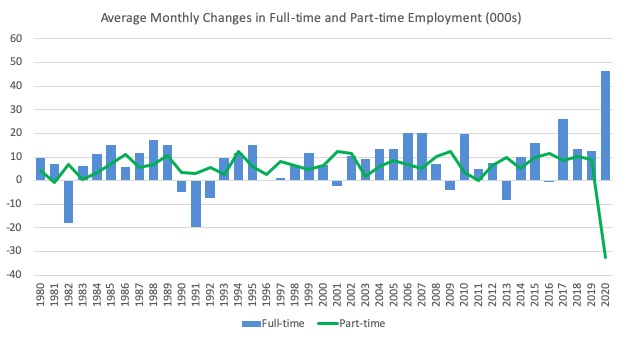
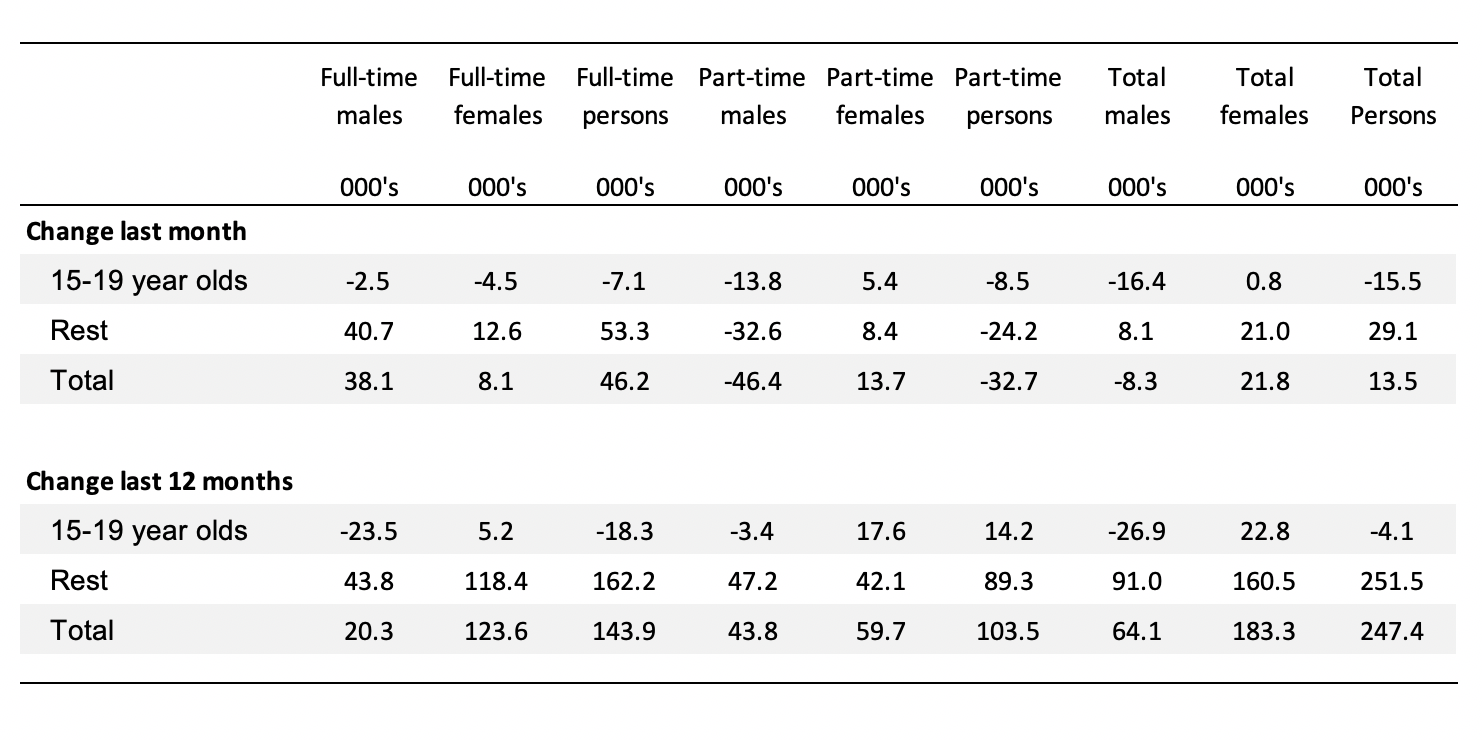
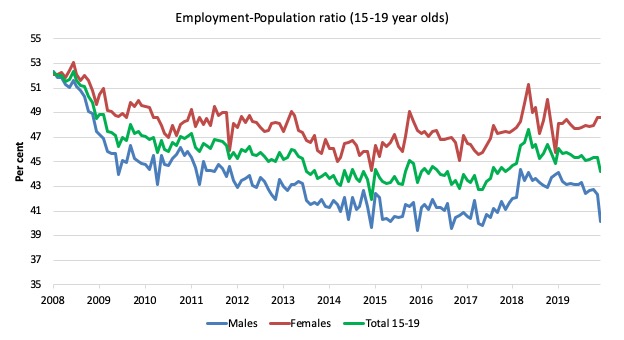
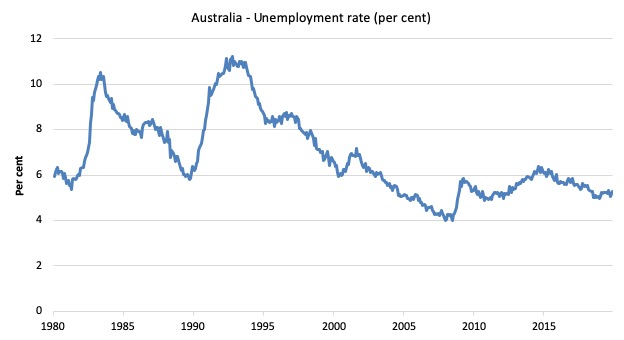
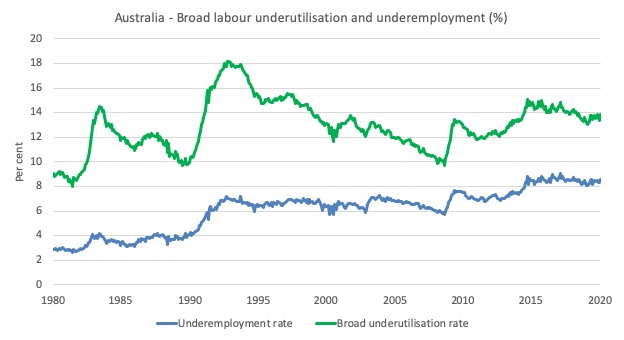
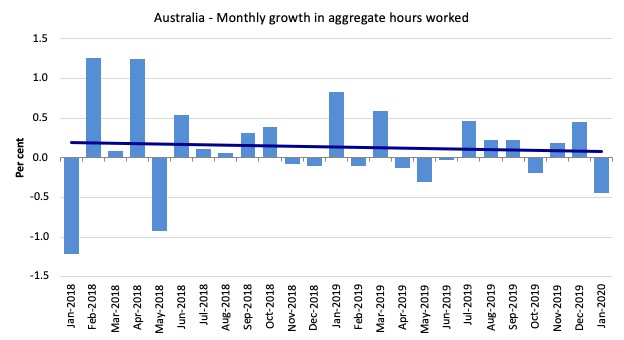
That’s neoliberal Philosophy hard at work!